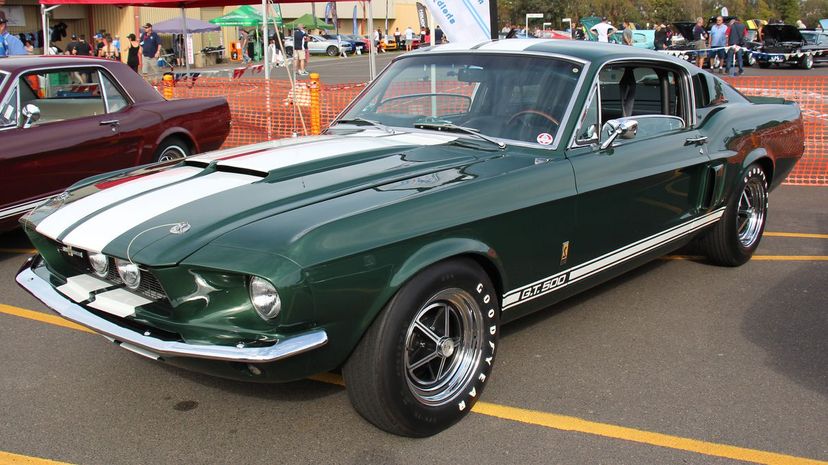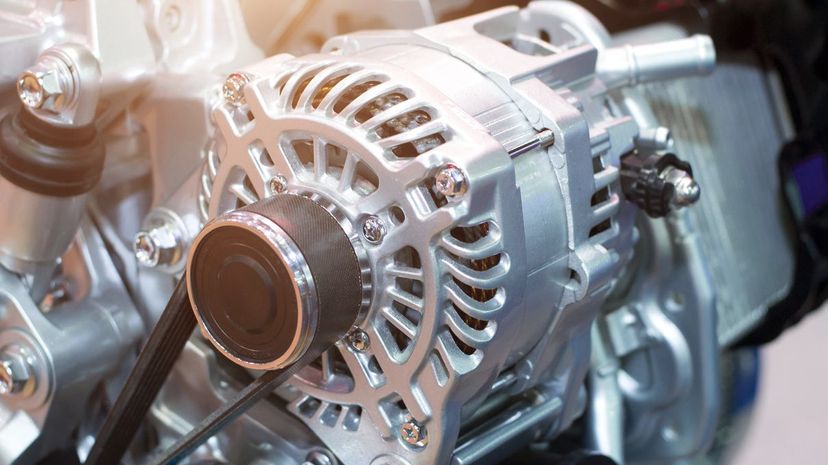
About This Quiz
You service your own vehicle, or maybe you don't have the time, but you reckon you have the ability. If this sounds like you, you're already way ahead of most drivers. You might, for instance, know the "coin trick" to check if your tire's tread depth is too low; you slot a quarter in one of the treads and see how much of the coin is left showing. But do you know how much of the coin is too much?
Is your automotive knowledge strictly mechanical, or are you a real know-it-all? When it comes to rules of the road, do you consider yourself an aficionado? If you encountered unbroken white lines in Washington state, for example, it's not prohibited to change lanes. But do you know under what conditions the Washington state driver guide recommends you cross an unbroken white line? Or maybe you know that State Highway 130 has the highest speed limit in the country. If you were already aware of the majority of the information mentioned, you might have what it takes to ace this quiz.
See if you're the person who should be called when there's an automotive dilemma, or if you're the one who should call someone else. Take this automotive quiz now!

The 1967 Mustang GT500 was, of course, powered by a V8 engine. Would you expect anything else from the king of American muscle? The GT500's 7.0-liter V8 powerplant helped it get down a quarter-mile stretch of track in less than 15 seconds - not bad for a 52-year-old car.

A differential allows two wheels to be driven at different speeds. For example, if you're turning left, the rear left tire won't need to rotate as much as the rear right tire. The differential allows this to happen.

Everything happens at a more rapid pace once you go from a regular street to the expressway. So you need to think faster and drive with more caution.
Advertisement

"HEV" stands for "hybrid electric vehicle," meaning these models have both an internal combustion engine and an electric motor. Generally speaking, HEVs achieve noticeably better fuel economy than their internal combustion engine counterparts. Toyota's Prius is arguably the most well-known HEV.

"LED" stands for "light emitting diode." LED lights are replacing conventional halogen light bulbs at an ever-increasing rate. This is hardly surprising considering that LEDs last considerably longer than halogen bulbs and use just a fraction of the energy to achieve the same level of brightness.

Your indicator lights run on a set electrical resistance. When a bulb burns out, the resistance changes. This allows a stronger electrical current to go to the working bulbs which causes them to blink faster.
Advertisement

In the automotive world, "PS" referrers to "Power Steering." Low-speed maneuvers without power steering certainly aren't any fun and will have you working up a sweat in no time!

The 1984 Jeep Cherokee (XJ) is considered by many to be the first modern-style SUV. Since its launch 35 years ago, the SUV has become one of the most popular vehicles in the automotive industry.

If your engine has in incomplete combustion, solid carbon will form from unburnt fuel. This is what causes the black smoke you see coming out of some exhaust pipes.
Advertisement

It's normal for thin wispy white smoke to come out of a car's exhaust on a cold morning. This is just the build up of condensation escaping through the exhaust system. If it's thick white smoke that persists, however, you should get your vehicle checked out by a mechanic.

If a vehicle's tire is wearing faster in the center than on the edges, there's a good chance the tire is overinflated. You should find the recommended PSI on the sticker in the doorjamb on the driver's side. This number is usually somewhere between 30-35 PSI.

A tachometer usually shows your engine's RPM (revolutions per minute). The number you see is usually multiplied by 1,000. So, if you see a "3" on your tachometer, your crankshaft is making 3,000 full rotations per minute.
Advertisement

A "bimmer" is a nickname for a BMW, and BMW's 3-Series is the company's best-selling model. The 318i, specifically, is a BMW 3-Series with a 1.8-liter gasoline engine.

Modern exhausts have catalytic converters to help meet emission regulations, and they have mufflers to prevent excessive noise. Straight pipe exhausts have neither of these things, however, and you'll surely hear it before you see it!

A rotary engine is an internal combustion engine, but it works completely different than the engines found in most cars. It was conceived and developed by Dr. Felix Wankel, hence the name.
Advertisement

Ford launched the Model T in 1908 and, thanks to an assembly line production process, Ford could sell the base model Model T for $825: that's around $23,000 in today's money. By 1925, Ford had fine-tuned the production process so well that it could sell a Model T for just $260, which is around $7,262 in today's money!

Chevrolet's Bolt launched in 2017 and has been a hugely successful all-electric vehicle for the company. The 2020 model has an EPA-rated all-electric range of 259 miles and starts at $37,495 before tax incentives are taken into account.

Parking brakes can fail, especially if you're parked on a steep hill. So, as a preventative measure, you should always point your vehicle's wheels towards a curb when parked on an incline. That way, if your parking brake fails, the curb should stop your vehicle from gaining too much momentum and causing damage or harm.
Advertisement

The Beetle overtook Ford's Model T in 1972 as the best-selling vehicle. There have been over 21 million Beetles made, far surpassing the Model T's 16.5 million units. The Beetle was surpassed as the best-selling model in the late '90. You'll find out about that later.

Just because the sun has risen, doesn't mean there's enough light to drive safely without headlights. So, in the U.S., the aw states that you need to wait until 30 minutes after sunrise to turn off your headlights.

Normally, it's never beneficial to turn off your vehicle's traction control system. But if your vehicle is slipping on a slippery surface, cutting the power to its wheels help the tires to disengage from slippery surface so you can drive off.
Advertisement

A naturally aspirated engine is an internal combustion engine that depends solely on atmospheric pressure for its oxygen intake. Engines that use a turbocharger or supercharger have a forced oxygen induction.

On a traditional 4WD (four-wheel-drive) vehicle, the front and rear wheels lock together. This is the best for getting through deep snow. The next best would be an AWD (all-wheel-drive) vehicle, but this system waits for slippage before sending power to the wheels that have lost traction. This is better for general driving, but not for deep snow.

Depending on the year, Volkswagen will be either the first-, second-, or third-largest automotive company in the world. As such, it has acquired a number of brands, some of which include Seat, Skoda, Audi, Bentley, Bugatti, Lamborghini, Ducati, and Porsche.
Advertisement

Toyota's Corolla took the best-selling car crown away from Volkswagen in 1997 with the Corolla. The Corolla launched in 1966 and, as of 2016, had sold over 44 million units. This far surpasses the 35 million Volkswagen Golfs which have been sold.

Diesel engine's ignite their fuel through compression, unlike gasoline engines which use a spark from their spark plugs. So, regardless if it's a V6 or a V12, a diesel engine won't have any spark plugs.

In 1983, Toyota's chairman, Eiji Toyoda, decided it was the right time for Toyota to enter the luxury car niche. But these models would be so luxurious that placing a Toyota badge on them might hurt sales. So, in 1989, Lexus was created and launched the flagship LS 400.
Advertisement

The purpose of the threads on a tire is to kick surface water out from under it. The treads give the tire better traction in wet conditions and significantly reduce your chance of hydroplaning.

Most states require tires to have a minimum tread depth of approximately 1.6 mm (2/32) inches. Studies have found that once tread depth falls below 4/32 inches, tires lose approximately 50% of their available friction in wet conditions.

Generally speaking, RWD (rear-wheel-drive) cars handle better than FWD (front-wheel-drive) cars. On RWD cars, the rear wheels deal with the power, while the front deal with the turning forces. On a FWD car, however, the front wheels have to deal with a lot more. This is why FWD cars have a tendency to understeer.
Advertisement

It's certainly not common to find a public road in America with an 85 mph speed limit, so you'll be forgiven if you got this one wrong. In fact, this speed limit only exists on Texas State Highway 130.

While American automaker Nash was the first company to offer seat belts as an option in 1949, they weren't the first to offer them as standard. Saab first introduced seat belts as standard on the GT750 in 1958.

The human body can dispose of the alcohol in 12 ounces of beer in one hour. This is extremely important to know if you're planning on having a drink but don't want to be over the BAC limit.
Advertisement

Some Mercedes-Benz models can be fitted with fully active suspension, which is known as Active Body Control. This system's purpose is to eliminate body roll as much as possible when braking, cornering and accelerating.